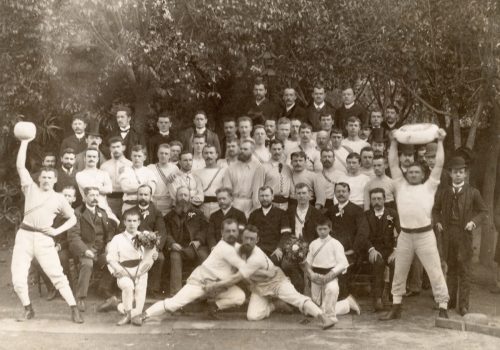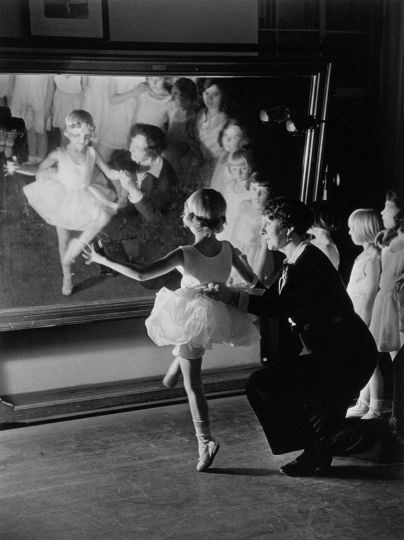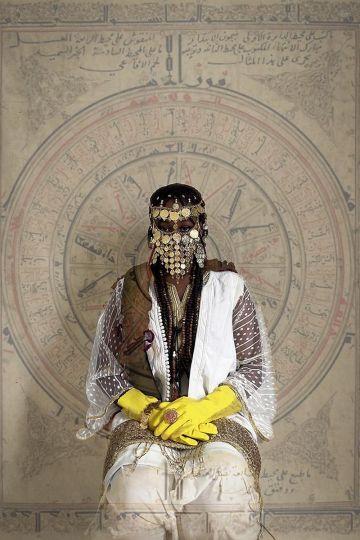“A pungent mushroom scent floats into the hotel room. Staring at the ceiling, I think I hear the nauseating murmur of mastication, that of insects or all-consuming molds. I imagine this decomposition process, time’s ongoing effect on the asperities of events. To check, my eyes drift along the wall: the tilted frame, the chair seen at an angle, and on the table, the found papers. Earlier, I had opened that scrapbook whose sheets were perforated with rounded holes that started coming to life if you quickly flipped through the pages. It recounted the worms’ journey in the depths of the paper. They did not care about the chronology of the dates mentioned in the journal, piercing days and months, with the verticality of passing time. I saw before my eyes the materialization of crazy quantum theories, relativity, the Planck scale, the twin paradox, time loops. It seemed to me that it was going backward, and that behind me, nothing would be as it was before.”
—Nicolas Savary
Conquistador is an investigation into the distance between eras and territories, into remoteness between people, into disappearance and connections.
After the chance discovery of archives made up of photo albums, handwritten letters and other documents, photographer Nicolas Savary went to Argentina, following in the footsteps of Louis de Boccard, a member of Fribourg’s patrician aristocracy who emigrated to the country in the late nineteenth century. His approach consists in tracing back a novelistic and fairly fragmentary biographical story, and confronting realities that seemed to reveal themselves to him on the landscapes he crossed.
A trunk full of papers
In 2010, the sale of a house in Villars-sur-Glâne which belonged to Louis de Boccard’s family led to the chance discovery of an old trunk containing reams of documents. This treasure trove of material—letters, photographs, postcards, stamps, newspaper clippings, pictures travel logs and receipt offer a fascinating insight into de Boccard’s travels, expeditions, interests, preoccupations and circle of friends. They are also an exceptional historical record of Argentina and South America between 1890 and 1950. Nonetheless, certain parts of his life remain hazy, even mysterious. One day, perhaps, the archives held by his descendants or in public and private collections in Switzerland and Paraguay will allow researchers to lift the veil of secrecy surrounding these episodes.
Why did Louis de Boccard emigrate?
At the age of 23, Louis de Boccard was hired to work in the settler colony of Máximo Fernandez in Argentina. Until then, the young man had struggled to find his niche in life. He had originally planned to head to Australia but when the opportunity arose for him to join a group from Fribourg who were setting off for the settler’s colony in Bragado, de Boccard did not have to be asked twice. For this strong-willed young man,
it was also a chance to indulge in his love of adventure, nature and hunting. So, on April 17th 1889, he left Fribourg for Geneva to join the 30 future colonists, and their herd of 30 cows and three bulls, from where they would travel to the port of Marseille. Here, man and beast boarded a ship destined for Buenos Aires. They would finally make land on May 20th.
The son of Fribourg nobility
Louis de Boccard was the eldest of four children. From the moment he arrived in Argentina in 1889, he wrote regularly to his parents, Alphonse and Henriette de Boccard, “Nini” (his pet name for his sister, Antoinette de Weck) and, towards the end of his life, his great- nephew Régis de Courten. His letters are carefully numbered, with a handwritten summary of their content on the envelope as well as the dates when the correspondence was sent and received. As well as enquiring after the family’s health and day-to-day affairs, de Boccard wrote about the current political situation, the news in general, his expeditions, the people he knew and the lives of his relatives in Europe and South America. He was visited by his cousin Raymond de Boccard, who travelled from Europe, as well as his nephew Emmanuel de Saugy and his cousin Henri de Chollet, who both lived for a time in Latin America.
A supportive family
Louis de Boccard was close to his family. Despite the distance between them, he knew he could count on his parents’ support. He was able to buy his first farm in Gualeguay thanks to an advance on his inheritance from his father as well as the proceeds from the sale of his family’s Bellechasse estate in Sugiez. His wider family leveraged its network of contacts to help him with his projects and business ventures. After his wife Inès died in 1902, de Boccard returned to Switzerland with their two children. Alfonso (Alphonse), who was born in 1893, and Mirelia (Mireille), who was born in 1895, they were sent to boarding school in Switzerland and in Europe.
The blue album
The most important record in the Louis de Boccard collection is a large bound album, measuring 72×50 cm and containing 264 photographs of Buenos Aires and the interior of Argentina. Most were taken by Samuel Rimathé, a photographer from Graubünden. Rimathé arrived in Buenos Aires on August 31st 1888, a few months before Louis de Boccard, on board the Neva, a ship sailing under the English flag, which had left from the port of Southampton. In his declaration to the Argentine authorities, he stated that he was Swiss, unmarried, 25 years old, Protestant and a professional photographer. From 1888 to 1897, he was based in a studio at Calle Libertad 151. His photographs which appear in the blue album were taken during his early days in Argentina (1888 and 1889). All are albumin prints, which de Boccard lovingly collected and pasted into the album. It is uncertain whether the two men knew one another but they likely moved in the same circles in Buenos Aires.
This album underwent extensive conservation and restoration work in 2017–2018. Owing to the size of the pages and the poor quality of the paper, viewing the album was a delicate operation and risked damaging the photos. The task of removing these images was painstaking but well worth it, not least because on the back of many of them were handwritten, and highly informative, notes by the collector. The exhibition features 82 framed images from the collection, as well as a replica of the blue album which visitors are free to peruse at their leisure.
Sur les pas de Louis de Boccard, un explorateur suisse dans le Nouveau Monde
January 26 to April 21st
Musée gruérien de Bulle
Rue de la Condémine 25
1630 Bulle (Suisse)
















